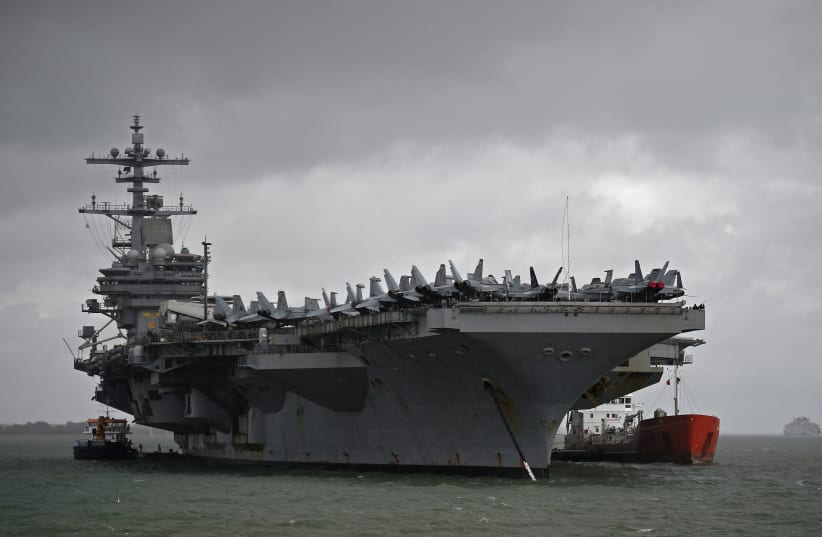The aircraft carrier George H. W. Bush had its deployment extended in the Mediterranean after US-Iran tensions rose in March. The aircraft carrier had its role extended from a seven-month deployment to nine months, the Navy Times reported.
“Under the revised schedule, the carrier is slated to return to Norfolk, Virginia, in early May, according to the official, who requested anonymity to discuss internal planning,” the report said.
“We did move the carrier to be slightly closer but it’s still in the purview of EUCOM, but it was in response to, of course, what we saw as increasing attacks on our service members in the region.”
Sabrina Singh
“We did move the carrier to be slightly closer but it’s still in the purview of EUCOM, but it was in response to, of course, what we saw as increasing attacks on our service members in the region,” Pentagon spokeswoman Sabrina Singh told reporters Monday.
This came after Iranian-backed militias in Syria targeted US forces and the US responded. It also comes amid Iran-Israel tensions.
Why is the US extending an aircraft carrier's deployment?
It's important to understand the context here. The US has maintained a carrier strike group in the Mediterranean persistently since the Ukraine war began, according to USNI News.
The George Bush strike group includes Carrier Air Wing 7 and its escorts. This also gives options for the US in terms of tensions in Syria.
Syrian operations are under US Central Command. The Bush will support Central Command’s needs in this case, even though the deployment began due to tensions in Ukraine. This requires some coordination between the carrier group and CENTCOM and NAVCENT, the naval component of Central Command.
The Bush arrived in the region in August, replacing the Harry S. Truman Carrier Strike Group
. “US Central Command spokesperson Col. Joe Buccino told Reuters that USS Leyte Gulf (CG-55) and USS Delbert D. Black (DDG-119), part of the strike group, are also getting extended,” USNI news noted.
The Leyte Gulf is a guided missile cruiser and the USS Delbert Black is a destroyer. The group includes a support ship called USNS Arctic.
In addition, the US has increased its air force assets in the region.
According to CNN, “A squadron of A-10 attack aircraft are deploying to the region ahead of a scheduled deployment. The deployment of the attack aircraft was expedited by several weeks following the attacks in Syria, according to Pentagon spokesman Lt.-Col. Phil Ventura.”
Ventura said that “we are committed to supporting the defeat-ISIS mission alongside a global coalition in Syria and prepared to respond to a range of contingencies in the Middle East if needed.”
A month ago, the carrier strike group put into port at Souda Bay to take part in Neptune Strike (NEST) 23-1, which is described as a vigilance activity focused on increasing NATO interoperability for a stable, secure, and prosperous Europe.
"Our sustained, integrated operations with our allies during deployment has been invaluable to strengthening our relationships and integrated deterrence in the region," said Rear Adm. Dennis Velez, commander, Carrier Strike Group (CSG) 10, George H.W. Bush at the time. The Bush took part in operations with the Italian and Spanish navies.
During Juniper Oak, the large joint drill with Israel, photos showed the Arleigh Burke-class guided-missile destroyer USS Nitze sailing in front of the Nimitz-class aircraft carrier USS George H. W. Bush during the drill. It sailed alongside Israeli naval ships at the time in January. The Bush last docked off Haifa in 2017.
The extended deployment may help deter Iran’s threats to the US in Syria. In addition, the US has continued strikes against ISIS threats in Syria.
